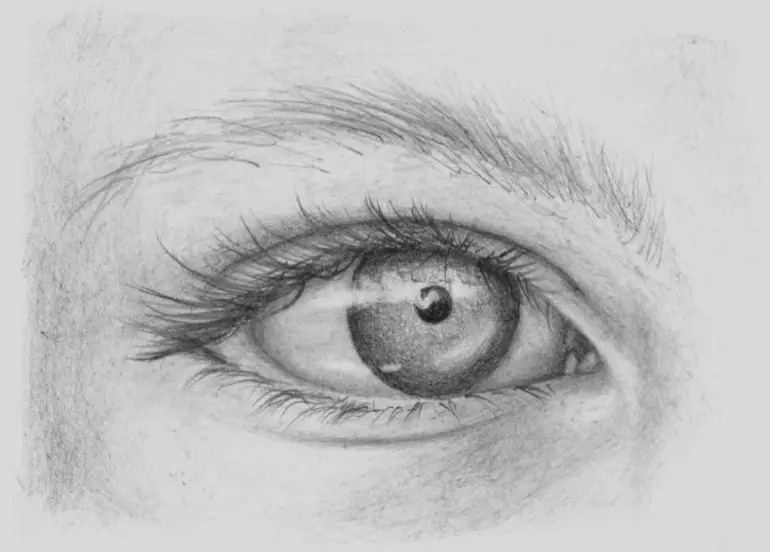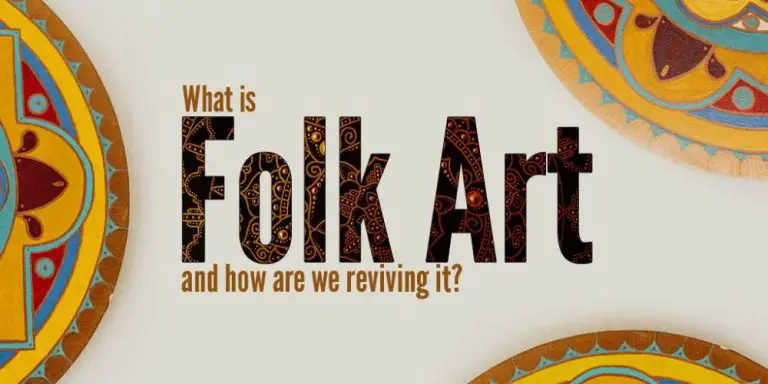Why is Modern Art So Bad? (What You Need to Know)
When it comes to great works of art, most people can appreciate the Vitruvian Man by Leonardo da Vinci and Raphael’s Sistine Madonna. However, when it comes to more modern and contemporary pieces of art, the reception varies.
One of the biggest challenges contemporary artists face is the criticism that their art is bad. This happens more with modern art, an artform that is often more unusual and unique.
But, does that mean modern art is bad? Or is there something else at play?
What is Modern Art?

(This article may contain affiliate links and I may earn a commission if you make a purchase)
https://pxhere.com/en/photo/1563849
Before one can start to answer the question of “why is modern art so bad,” it’s first necessary to determine what the term “modern art” refers to.
People tend to use the term “modern art” to mean art that has been created recently. So, a person living in 2022 may use the term to refer to a work created between 1990-2022. However, in terms of the history of art, modern art is something completely different.
This term actually refers to art created during a very specific period of time – specifically, the Modern Era, which was roughly the time period between the 1860s to 1970s. Pieces created during the approximately 110 years during this period are what make up modern art.
Famous Modern Artists
Modern artists include famous, widely appreciated names like Pablo Picasso and Salvador Dali. Salvador Dali’s surrealist paintings are modern art, and early modernists include names such as Paul Gauguin and Paul Cézanne.
Art produced recently is actually not considered “modern art” and falls under the category of “contemporary art.”
Of course, this isn’t to say that modern artists are exempt from criticism or are universally popular. People have frequently looked at a Jackson Pollock painting and noted that his works look like something that a young child could make, with one critic claiming that Pollock’s work is indistinguishable from what a studio apron looks like after a being spattered with paint.
Additionally, some of Marcel Duchamp’s works were (and continue to be) heavily criticized for their lack of aesthetic standards.
Modern Art Response
One of the biggest criticisms lobbed at both modern art and contemporary art is the fact that a lot of the work produced during these periods is either ugly or far too simple.
It can be challenging for a person who hasn’t studied art to understand how something like “Levitated Mass,” a sculpture at the Los Angeles County Museum of Art, can be considered art. “Levitated Mass” is essentially a boulder placed above a viewing pathway that allows a 360-degree view for visitors.
Other popularly criticized works of modern and contemporary art include works like Chris Ofili’s painting “Holy Virgin Mary” (a mixed media art piece depicting the Virgin Mary and cut-outs of pornographic images with either elephant or cow dung) and Damian Hirst’s artwork “The Physical Impossibility of Death in the Mind of Someone Living“.
Understanding Aesthetic Relativism
The response to the criticism that newer art is often ugly and/or simple is the idea of aesthetic relativism – that is, the concept that beauty is in the eye of the beholder, and there are no universal aesthetic standards that can help determine what is beautiful art and what isn’t.
Additionally, many people point out that the concept of beauty differs depending on location and culture – what is considered beautiful in one place may be ugly in another.
In response to this, some critics argue that a universal standard of beauty is required to determine quality and decide what is or isn’t art. However, as mentioned above, this is challenging due to cultural differences and different tastes from person to person.
That said, while creating universal aesthetic standards may not be possible, the question of whether contemporary art is actually art is still a relatively common one.
Is Modern Art – Art?
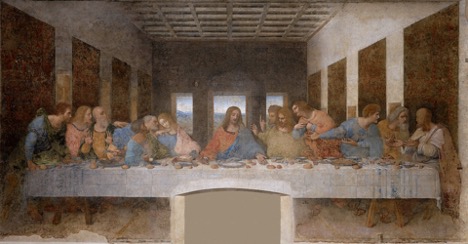
https://www.maxpixel.net/Leonardo-Da-Vinci-The-Last-Meal-The-Last-Supper-1128923
Art is often created as a response to the world around the artist. The great works of religious art by artists like Da Vinci and Michelangelo were created thanks to patronage by the Roman Catholic Church and other powerful religious leaders of the time, while the naturalists often created art in a quest to create something beautiful.
Modern art, similarly, was created as a response to the world around the artists producing it. In this case, it was created in response to a rapidly changing world, one that elicited a great deal of anxiety in artists.
A combination of scientific developments, changing politics, and technological revolutions in the late nineteenth century and early twentieth century made people feel like reason, optimism, and beauty were vanishing from the world, and artists responded by creating the work we know today as modern art.
War and Art
The two world wars only added to this sense of disillusionment. For modern artists, the new theme of the art they were creating was that art was to be a quest for the truth. They believed that the work they created should not shy away from the reality of the world around them, no matter how brutal or ugly that truth was.
The world was not beautiful, and art should similarly reflect that lack of beauty.
This can be seen in a well-known early modernist painting – Edvard Munch’s painting “The Scream.” To Munch, the world and reality were a horrifying, disintegrating swirl, and his painting is a reflection of that recognition.
Reductionism
Another theme within modern art was “reductionism.” This school of thought essentially believed that paintings were two-dimensional surfaces with paint on them, and they should remain as such. Paintings should not be concerned with telling stories and should instead be a quest to find out the truth – and this can be achieved by eliminating as much as possible from painting to see what survived.
Things that were “reduced” from art included a connection to external reality, the pretense of a third dimension (including reducing the texture of the paint to create a more convincing two-dimensional reality), composition, and even color differentiation.
One of the best-known paintings in this tradition is Kazimir Malevich’s Black Square. Other well-known paintings include Malevich’s White on White ( a white square painted on a white canvas) and Ad Reinhardt’s Abstract Painting (a black cross painted on a black canvas).
Other “reductions” included switching from painting unique and well-known subjects to painting extremely ordinary objects, such as Warhol’s paintings of soup cans. Additionally, artists experimented with removing perceptual content from their works – ultimately removing the painting part of art altogether, as with Joseph Kosuth’s “It was It, Number 4,” which consisted of words in blue neon overlaid on black type-set text.
For the modernists, art had become a philosophical experience and an experiment rather than a purely artistic process. At the same time, these experiments were rooted in the world they were living in. It required viewers to think through what the artist intended to say with their work, setting it aside from more traditional works, where the beauty was often all that viewers focused on.
Modern artists forced a consideration of the context behind their work in a way that was unfamiliar to both audiences and critics.
So, while modern art is undoubtedly different from art that focuses on traditional realistic forms and the beauty of the world around us, it is still art – just a different kind of art.
Understanding Contemporary Art
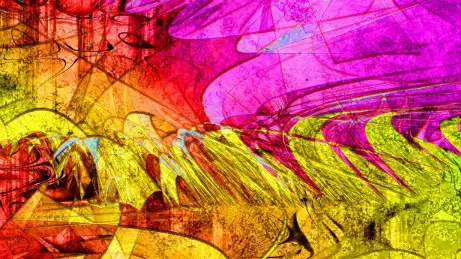
Contemporary art, as mentioned above, is art that has been produced recently – specifically, in the latter half of the 20th century and the beginning of the 21st century. Some popular themes seen in contemporary art include the advance of technology, the impact of increasing global connections, and the diversity of cultures.
Though not considered modern art, contemporary art can be considered postmodern art. This style of art is a reaction to modernism, which came to a dead end in the 1970s. Postmodernism reintroduced content to art, though only in certain forms of content – it specifically stayed away from themes of reality and nature.
At the same time, it stepped away from the reductionism of modernism and instead tended towards the destructive. It became an internal, subversive commentary on art history. Duchamp’s work “L.H.O.O.Q” is essentially the Mona Lisa with an added mustache and beard, while “Venus de Milo” which was created by Niki de Saint Phalle’s is an interesting sculpture made in the classic style, created with plaster and chicken wire, and also black and red paint-filled bags, after which it was fired upon by a rifle to create a paint splatter effect.
When people talk about contemporary art as full of bad taste or ask the question “Why is modern art so bad?” it is often postmodern art they are referring to. However, like modern art, postmodern works have a purpose all of their own – in this case, a criticism of art history and a reaction to what artists considered an increasingly brutal world around them.
This second aspect also showed itself in a more ruthless nihilism seen in postmodern art, which attempted to eliminate any sense of positivity still remaining. It is here that some works are considered purely offensive, including the above-mentioned Holy Virgin Mary and other works like Marcel Quinn’s “Self,” which is a cast of the artist’s head made of his own blood collected over several months.
At the same time, not all contemporary art is postmodern.
Contemporary art encompasses a range of different styles and movements, including hyperrealism, remodernism, urban art, vaporwave, and classical realism. Some contemporary artists do produce abstract art, and others work on pieces that may initially seem to be ultimately unintelligible – however, like with modern and postmodern works, there is usually a knowable reality that explains the piece of work.
Ai Weiwei is among the best-known contemporary Chinese artists. His sculpture “Straight” (also known as “Wenchuan Steel Rebar”) initially looks like an artistic depiction of a wave made of rusted steel rebar. The rebar, however, comes from buildings damaged and destroyed during the 2008 earthquake in China’s Sichuan province.
The buildings destroyed included a number of schools, and the dead included over 5,200 children. Investigations found that the buildings were poorly built due to corruption. Weiwei’s work, using steel debris from the damage caused by the earthquake, was created to resemble a fissure in the ground.
Weiwei is neither a modernist nor a postmodernist. Much of his work falls under the art movement of excessivism – however, “Straight” is not one of them. It is, instead, the type of work that often elicits the question of “why is modern art so bad” – and yet, like modern and postmodern works, it causes a far different reaction in viewers once the history of the piece is clearer.
Objective vs. Subjective Art
Though it is, by now, evident that there is value in modernism and postmodernism, it still doesn’t answer the question of whether having an objective set of aesthetic standards would be a better option. It is still understandable why some modern artworks elicit negative responses, and the argument that museums should be home to works that are easier to appreciate is one that many will sympathize with.
However, this doesn’t mean that subjective art must be shunned. It is possible to enjoy both objective and subjective pieces, and, as discussed earlier, the decision on what art is valuable and beautiful is ultimately in the eyes of the audience.
Individual differences mean that there is no single art piece that is loved universally, and thus there is no single set of aesthetic values that can be used as a universal standard of taste and preference.
Additionally, subjective art often tells viewers a lot about objective reality, giving it a value of its own.
Audience Criticisms of Contemporary Art
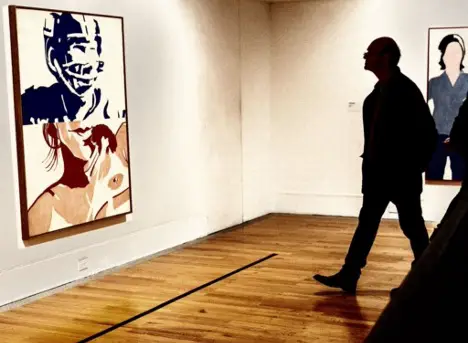
While it is true that many modern, postmodern, and contemporary art pieces have value as art pieces, it’s similarly undeniable that some art is, in fact, bad – or, at the very least, not of a quality high enough to justify its inclusion in museums and galleries.
One example of this is Damien Hirst’s showcase of his traditional paintings inspired by Francis Bacon, No Love Lost. This 2009 work was panned almost universally by critics, and much of his work was seen as being of poor quality. It was, however, displayed at the Wallace Collection in London, a museum that is home to works of art by Rembrandt and Titian, among others.
Given this, it’s easy to understand why modern art comes under criticism and why classical works are regarded as superior. Part of the reason is that gallery owners and art buyers treat many modern art pieces as investments, buying and displaying works by well-known artists regardless of quality in the hopes that their value will rise and allow them to make a profit on the pieces.
Another aspect, however, is the issue of time and history. It’s essential to remember that the great classic artworks and works of past artists are the ones that have survived the decades and centuries since their creation – the ones that were considered important and beautiful enough to escape destruction by their creators and owners, as well as those lucky enough to remain undamaged over time.
Contemporary pieces, on the other hand, do not have the benefit of this type of “selection process.” Da Vinci’s works are a half-millennia old – and contemporary works that will survive another half-millennia will undoubtedly tell a different story of the 1900s and 2000s than we can recognize today.
Why is Modern Art So Bad – Final Thoughts
Answering the question of “why is modern art so bad” is a complex one, and the answer is that it isn’t – not really. That isn’t to say that it is appreciated universally – each person has their own preferences, and there are those that undoubtedly dislike the movement as a whole, as well as other contemporary art movements such as postmodernism.
Ultimately, it’s essential to remember that all art is subjective and that art goes through successive movements that change according to the time and the world around the artists creating artworks. The modern and contemporary art produced today will likely be markedly different from the art that will be created in 50 or even 100 years, just as it is different from the art of the 1800s, and just as contemporary art is different from modern art.
Evolution in art is not a negative. While there is an argument to be made that modern and postmodern art is, perhaps, overdone among contemporary artists, it does not make it lacking in meaning and artistic value, just as a previous generation of artists such as the naturalists, focused on beauty over deeper meaning does not mean their work does not have value.
Beauty, ultimately, lies in the eye of the beholder, and there are many people who find value and beauty in modern and contemporary art, even pieces that focus on the world’s ugliness – and this is why museums dedicated to such art remain popular among viewers of all ages and cultures.


